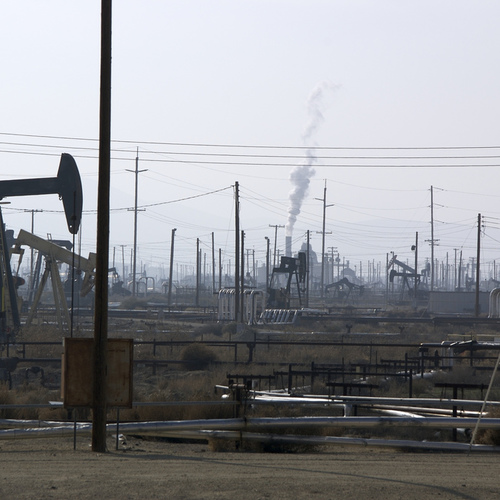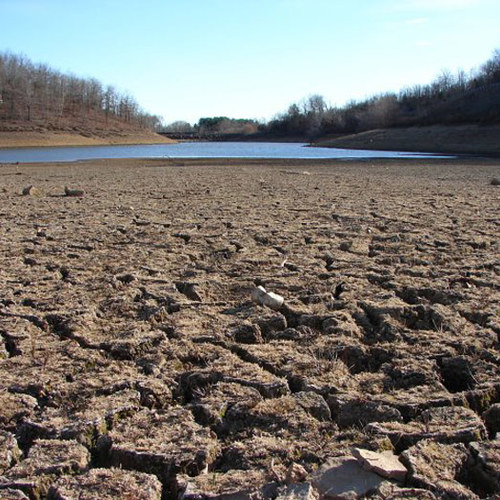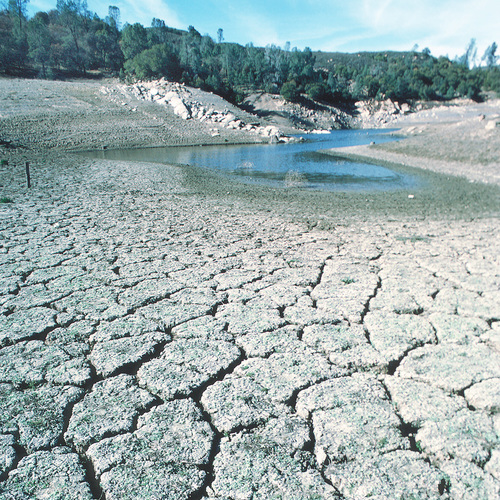
Image Credit: Ben Klocek / CC BY 2.0 / Flickr
A new study has tripled the amount of fresh groundwater in California that could be used for drinking and irrigation.
In a study published in the Proceedings of the National Academy of Sciences, the Stanford University authors find evidence of groundwater aquifers as deep as 3,000 meters in eight Central Valley and coastal counties. That’s good news for a state in the grips of a long-standing drought.
The rub is that oil and gas projects are common in the same areas, raising new concerns about the potential for contamination.
“In the Central Valley alone, fresh groundwater volumes can be increased almost threefold, and useable groundwater volumes can be increased fourfold if we extend depths to 3,000 meters,” the study notes. “However, some of these deep groundwater resources are vulnerable to contamination from oil/gas and other human activities. Our findings provide the first estimates, to our knowledge, of underground sources of drinking water depths and volumes in California and show the need to better characterize and protect deep groundwater aquifers.”
The study found oil and gas activity in seven of the eight counties covered in the survey. Although most of the activity was light, in Kern County in the Central Valley between 15% and 19% of oil and gas projects were occurring in freshwater zones, a report at Inside Climate News said.
Robert B. Jackson, one of the two authors, told the website, “We don’t know what effect oil and gas activity has had on groundwater resources, and one reason to highlight this intersection is to consider if we need additional safeguards on this water.”
Longstanding concerns about fracking
One worry in California, as in a number of other states, is that hydraulic fracturing, or fracking, can pollute underground water supplies. The Environmental Protection Agency issued a report in March concluding the practice had in certain instances affected drinking water supplies. The EPA said the number of cases of contamination was small when compared to the number of fracking wells.
California decided against an outright ban on fracking and instead imposed some of the toughest regulations in the country on oil producers to guard against contamination.
Still, the proximity of oil and gas operations to supplies of fresh water is potentially troubling. An earlier report by Inside Climate News found that fracking in relatively shallow groundwater supplies in Wyoming left chemicals related to fracking operations in the water.
The industry has argued that fracking typically occurs much deeper than aquifers supplying drinking water. However, this new research points to underground sources of drinking water — water with a higher saline content that could still be used for drinking water with some treatment — deeper than typical freshwater supplies.
Jackson said that past studies looked only at shallow water reserves because scientists didn’t think freshwater would be found at great depths. This study, he said, indicates that fresh water is “surprisingly abundant at deeper depths.”
While there are apparently ample water reserves deep in the ground, not much is known about the impact of oil and gas operations on water quality. The authors of the study said it’s “rarely possible” to know because there is little or no monitoring of water beyond the 100-meter mark, the depth of a typical domestic well.
Weekly Newsletter
Get building science and energy efficiency advice, plus special offers, in your inbox.















3 Comments
Something else not mentioned was this piece is that
many areas of the central valley already have problems with sinking due to groundwater extraction.
Per the CNN article the authors believe that just because fracking has occurred, it doesn't mean that the water has been ruined.
"What we are saying is that no one is monitoring deep aquifers" Kang said. "No one's following them through time to see how and if the water quality is changing."
Then there's the issues of expense. It's not cheap and its hazardous to drill 3,000 feet below the surface.
That's 3000 meters (~1.9 miles) deep, not 3000 feet (~0.6 miles)
That's a somewhat daunting & expensive resource extration problem. I wonder what even the pumping costs per acre-foot that is. I'm sure it's cheaper than sea water desalination, but a multiple of the energy footprint of most CA water supplies, and may not be cheap enough to be viable for agricultural use without subsidy.
Is it sustainable?
Even if that water is accessible and potable, I wonder if it can be used in a sustainable manner? I kinda doubt it.
Log in or create an account to post a comment.
Sign up Log in